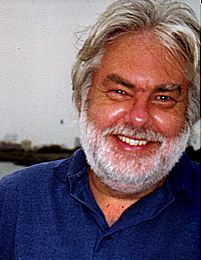|
The
Recurrent Vision and
the
Peace Brigade Movement

By
Thomas Weber, TFF adviser
For as long as there have been wars there have also
been plans to stop them. There have been saints who have
preached nonviolence, leading political figures and
academics who have advocated various grandiose plans to
achieve world peace through alliances, world government
or international armies, and people who have put their
lives on the line, by physically placing their bodies
between disputing parties to try to end conflicts, or by
taking risks in order to try to end oppression. And while
bloody conflicts and injustice exists, even in far away
places, there will always be people of good will who will
cross borders, often at great personal risk, to intervene
as peacekeepers, peacemakers or peacebuilders.
And now the world is watching. Innumerable wars and
armed conflicts rage or simmer in different countries or
neighbourhoods around the planet, viewable from
television sets or doorsteps depending on one's location.
Humanitarian aid agencies supported by churches house
war-weary people fleeing men with guns. Governments try
to intervene in armed conflicts by sending men with guns,
sometimes under United Nations auspices, to "help". At
times soldiers in these new roles have complained that
they feel humiliated because they are prohibited from
responding in line with their traditional training. As
soldiers and global strategic thinkers show little
ability to creatively transform their conflict
intervention methods, there are calls for the development
of a nonviolent alternative.
A long and rich history of nonviolent cross border
interventions, that is nongovernmental efforts at sending
peace missions, known as Peace Brigades, Peace Teams or
Peace Armies, already exists. These ad hoc citizens'
efforts have been sent out since the time of the League
of Nations and in total there have been more such
citizens' missions than UN Peacekeeping missions.
Although this history constitutes a rich source of
practical experience, of lessons learned, these people's
actions are not as well known. They are underfunded and
can send few volunteers to the field, leaving them
invisible to global media. This means that the lessons
gained have never been drawn together and subjected to
sustained scrutiny, which means that inadequate progress
has been made in fulfilling the potential inherent in
these interventions. To remedy this failing, the first
step is to collect the stories of nonviolent cross-border
intervention in one place for scrutiny. My co-editor,
Yeshua Moser-Puangsuwan, and I thought that it was time
that these interventions were looked at seriously and for
the last few years have been engaged in a project to
chronicle and analyse these attempts. The book where we
have attempted to do this, Nonviolent Intervention Across
Borders: A Recurrent Vision, presents a new and
comprehensive typology providing a framework within which
to examine these interventions.
As noted above, the voices for a completely unarmed
peacekeeping force have been heard regularly throughout
this century. Pacifists who believed in stopping
conflicts and protecting victims could hardly have done
otherwise but call for such a force if they wished to
maintain consistency. But there were practical reasons
also. Charles Walker, the American Quaker advocate of a
World Peace Guard, suggests that the military may not be
the best instrument for securing peace. He criticises the
proposals of some military veterans of UN missions who
have been pushing the concept of a military agency which
includes peacemaking (conflict resolution) and
peacebuilding (socio-economic development and
reconstruction) functions. A peace force which has been
engaged in military operations will find it difficult to
talk to the party it has been shooting at. If violence is
used, then a peacekeeping force may, in critical
situations, "become a paramilitary force with aspects of
an occupying army" in which case community relations
programs, even those attempted by dedicated officers,
cannot hope to overcome or mitigate the community's
hostility. Perhaps, as Walker notes, it is an inevitable
consequence that "the effect of a military force will be
estimated in military terms". And finally, following a
survey of peacekeeping possibilities, he concludes that
"peacekeeping missions by military forces are likely to
serve primarily the interests of the superpowers; and
threaten to isolate, exploit or dominate smaller and
weaker nations, particularly in the Third World". Walker
and other advocates of the unarmed alternative see these
problems as inherent in military forces, especially those
under the control of a supranational authority where the
large powers dominate and have rights of veto.
Current popular dissatisfaction with international
"peacekeeping" as it is now practiced through the United
Nations, and "peace enforcement" in the NATO mould, is
leading to an upsurge of interest in nonmilitary
peacekeeping. The governments of Germany, Denmark and
Holland have recently stated their intent to develop a
new form of international peacekeeping that does not rely
solely on armed troops. These governmental initiatives
have followed and at times led to nongovernmental forums
being established to debate the methodology to be used by
such unarmed units. The government of Austria has helped
in the financing of a center for the study of
peacekeeping with a significant focus on unarmed
intervention. Two multinational conferences took place in
1994 and 1995 involving participants from 30 countries,
and twice as many nongovernmental organisations, seeking
to establish large-scale nongovernmental peacekeeping
contingents.
One of these conferences, a consultation in
Washington, DC, on the concept of peace teams which was
funded by the United States Institute for Peace, was
attended by participants from more than 20 countries with
experience or interest in nongovernmental and
governmental peacekeeping. Several European states
(notably Germany, Denmark, Austria and Sweden) are
considering or have decided to devote a portion of their
defence budget to examining the unarmed option. Denmark,
the Society of Friends (Quakers), and groups devoted to
UN reform are outlining an unarmed option to operate
under the auspices of the UN, sometimes referred to as
"White Berets". Further, partisan efforts (that is those
aiming to bring about change by identifying themselves
with the oppressed) have become accepted as quite normal
over the past few decades.
In short, interest in this type of activism has never
been higher. United Nations Volunteers have initiated a
new peacemakers program in Burundi modelled, in part, on
the work of Peace Brigades International. Nongovernmental
groups currently sending volunteers to the field (often
to provide "protective accompaniment" to local peace and
social justice activists or in attempts to bring waring
parties together) include Witness for Peace, Christian
Peacemaker Teams, SIPAZ, Project Accompaniment, the
Balkan Peace Team and Peace Brigades International.
Combined, they are currently placing and supporting
almost 100 volunteers in conflict zones scattered across
a dozen countries. Compared to the mid-1980s when there
were only two organisations attempting this work, with a
handful of volunteers working in two countries, it is
clear that this is an idea that has taken on a life of
it's own.
It is somewhat surprising, therefore, that there is
currently no single publication which collects into one
volume the history of past and current actions of "Peace
Teams", the contingents that have made ordinary citizens
players in conflicts in the international political
arena. Their history is generally traced only through
articles appearing in small circulation journals, or
internal newsletters of the groups themselves.
Of course, it should be noted that unarmed nonviolent
interventions do not merely take place in the
international arena or in an organised way. Where many of
our cities resemble urban war zones there is much to be
said for acting locally. Elise Boulding has talked of a
"Peace Team" (being a "multi-ethnic/racial, multicultural
group of persons under secular or religious
nongovernmental sponsorship, national or international in
character, who have undergone specific nonviolence
training in conflict areas in their home countries")
creating social and physical "safe spaces" or "peace
zones" in conflict-ridden inner city areas. She gives the
Sisters of Loretto Project in Denver, Colorado as an
example. Other examples include the Mennonite's peace
monitors at Wounded Knee, the actions of the Christian
Peacemaker Team in Washington, and nonviolent community
safety and peacekeeping actions (at large festivals,
rallies and marches) by the Melbourne volunteer
organisation Pt'chang.
While Nonviolent Intervention details the history and
activities of citizen-based, international, nonviolent
crisis intervention initiatives, it is hoped that it will
also provide lessons for those wishing to act nearer
home.
Numerous cases of spontaneous interposition that have
interrupted conflicts have also been recorded. The most
important early account of these examples, of what is now
commonly referred to as "people's power" is contained in
Gene Keyes' 1978 article "Peacekeeping by Unarmed Buffer
Forces" published in Peace and Change. In that paper
Keyes reports on spontaneous interpositions in Algeria in
1962, in Aden in 1967, and in China in 1968. Following
the French pullout from Algeria, a large-scale civil war
seemed inevitable when in towns such as Boghari, "A crowd
of war-weary men and women created a human barrier
between the opposing forces. When the soldiers pressed
forward, the civilians forced them to embrace each other
and fraternize." In what was the former federation of
Southern Arabia, over 2,000 demonstrators, including
women, children and the elderly, "stopped heavy fighting
between rival nationalist groups...when they marched
through battle-torn streets screaming for a ceasefire".
During China's Cultural Revolution a mini-war erupted
between two Maoist student factions at Tsinghua
University in Peking. Eventually, a contingent of
workers, some 60,000 strong, entered the university
shouting the slogan "use reason not violence, use reason
not violence, lay down your weapons and form a big
alliance". The workers stood their ground in the face of
extreme provocation and violence and their action
eventually lead to an alliance of the fighting factions.
More recently, in the Philippines, in Bangkok, in
Tiananmen Square in Bejing, Moscow and in Belgrade the
efficacy of spontaneous people's power has clearly been
demonstrated.
These actions are inspiring and historically
important, offering insight into the dynamics of what
Keyes calls "massive nonviolent buffer actions", however
they do not provide adequate guidance for those planning
interventions in areas where the activists have little or
no relationship with the belligerents.
For those who have bothered to look at the past it is
clear, and now it is becoming increasingly obvious even
to those who are not specifically interested in the area,
that alternatives to the mainstream style of peace
interventions are not merely theoretical - there have
been many attempts to think through a nonviolent approach
and many examples of this vision have now been attempted
in practice - they are also becoming a practical
necessity. The focus of our work is to provide detailed
examples of nonviolent nongovernmental international
peace intervention initiatives undertaken by grassroots
activists, and to attempt to distil the lessons provided
by these examples for the benefit of those embarking on
service in peace teams or those attempting to establish
new peace team initiatives. The interventions discussed
in Nonviolent Intervention Across Borders include
mobilization actions (the voyage of the Lusitania
Expresso to Timor), nonviolent humanitarian assistance
("friendshipments" by Pastors for Peace), nonviolent
witness and accompaniment (by Peace Brigades
International, Project Accompaniment, Christian
Peacemaker Teams, the Balkan Peace Team, and Cry for
Justice), nonviolent intercession (by the anti-bomb
Sahara Protest Team), nonviolent solidarity (in the form
of the Cambodian Dhammayietra peace marches and the
lesson-rich Mir Sada action in Bosnia), and nonviolent
interposition (in Nicaragua by Witness for Peace and in
Iraq by the Gulf Peace Team).
NOTE The book edited by Yeshua Moser-Puangsuwan
and Thomas Weber, titled Nonviolent Intervention
Across Borders: A Recurrent Vision, has just been
published by the Spark M. Matsunaga Institute for Peace
at the University of Hawaii, and is being distributed by
the University of Hawaii Press.

Tell a friend about this article
Send to:
From:
Message and your name
To
NONVIOLENCE
FORUM
|
|